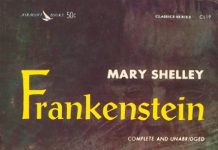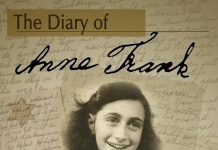 From the press release (blockquotes omitted):
From the press release (blockquotes omitted):
The Supreme Court of the United States today granted the petition for a writ of certiorari filed by lawyers from Stanford Law School’s Fair Use Project (FUP) and Wheeler Trigg O’Donnell LLP and will review the constitutionality of a federal statute that has removed thousands of foreign works from the Public Domain and placed them under copyright protection. The case presents a two-pronged constitutional challenge to the 1994 law passed by Congress—an amendment to the Copyright Act, the Uruguay Round Agreements Act (URAA): the case will test whether Congress has the authority to remove works from the Public Domain under the “Progress Clause” and whether the 1994 law violates the First Amendment rights of those who performed, adapted, restored and distributed works which had previously been in the Public Domain—works that include symphonies by Sergei Prokofiev, Igor Stravinsky, and Dmitri Shostakovich; books by C.S. Lewis, Virginia Woolf, and H.G. Wells; films by Federico Fellini, Alfred Hitchcock, and Jean Renoir; and artwork by M.C. Escher and Pablo Picasso, including Picasso’s masterpiece Guernica.
“I’m thrilled the Supreme Court took the case,” said FUP Executive Director Anthony Falzone, who is counsel of record for the petitioners. “This statute throws into question one of the most basic premises of intellectual property: once a work of authorship is placed in the Public Domain, it belongs to the public, and remains the property of the public—free for anyone to use for any purpose. That principle was respected for more than 200 years, because it represents a critical limit on the intellectual property ‘monopoly’ the Framers authorized. What Congress did here represents a huge departure from those basic principles with substantial constitutional ramifications.”
Background:
The Fair Use Project filed the petition in October, 2010 on behalf of orchestra conductors, educators, performers, film archivists and motion picture distributors who relied for years on the free availability of works in the Public Domain, which they performed, adapted, restored and distributed. The 1994 amendment to the Copyright Act, the Uruguay Round Agreements Act (URAA), removed these works and many others from the Public Domain and placed them under copyright protection in conjunction with the implementation of intellectual property treaties. That amendment affected the copyright status of thousands of works by foreign authors that had been in the Public Domain in the United States for decades.
Petitioners Lawrence Golan, Estate of Richard Kapp, S.A. Publishing Co., Inc., Symphony of the Canyons, Ron Hall, and John McDonough originally filed suit in 2001, contending that in enacting the URAA Congress exceeded its Article I power and violated the First Amendment. A lower court rejected both claims and dismissed the case in 2005. In a 2007 decision, the Tenth Circuit revived petitioners’ First Amendment challenge. Following that decision, the same lower court held the URAA was unconstitutional under the First Amendment. The Tenth Circuit reversed that decision last summer, holding the URAA did not violate the First Amendment. Today, the Supreme Court agreed to review that decision.
The specific constitutional provisions at issue in the case are the Progress Clause (Article I, Section 8, Clause 8) and the First Amendment. The Progress Clause—sometimes called the “Copyright Clause”—gives Congress the power to “promote the Progress of Science and useful Arts, by securing for limited Times to Authors and Inventors the exclusive Right to their respective Writings and Discoveries.” Petitioners contend that removing material from the Public Domain violates the “limited times” restriction and the URAA as enacted does not “promote the Progress of Science and the useful Arts.” Petitioners contend the URAA violates the First Amendment because it is not narrowly tailored to any important government interest.
The case is: Golan, et al., v. Holder (Attorney General), et al. (10-545).
A copy of the cert. petition is available here http://blogs.law.stanford.edu/newsfeed/files/2010/10/Golan-v.-Holder-Petition-for-Cert.pdf.


































I’m no expert in international copyright law, but the Fair Use Project’s arguments may be hindered by the complications that resulted when we belated joined the Berne Convention.
Merging two different approaches to copyright required a lot of adjustments at the fringes. One area of conflict were cases where European authors had, in the past, been hurt by registration and renewal requirements in US copyright law that aren’t present in Berne. That led to some of their copyrights going into the public domain in the U.S. but not in Europe. Making our law more Berne-like would prevent that from happening in the future and it’s why US authors no longer have to muddle with complicated renewal requirements.
It’s my understanding that those working out the adjustments, extended the new protections that a Berne-compliant US copyright law would offer back a decade or so into the past. That’s the retroactive restoration of copyright we’re discussing here. They’d already fallen into the public domain under the renewal requirements of pre-Berne US law. They were brought back into copyright protection under post-Berne US law.
That compromise then became a treaty which we signed and as an international treaty it wields enormous influence in a court of law, one almost co-equal to the Constitution. The Fair Use Project is attempting to argue from a broad, first amendment right to fair speech in a specific area where that right has been limited by treaty obligations concerning copyrights. Courts will generally opt for clear and specific texts over the broader, general claims.
That argument is made all the stronger by the fact that those treaty provisions were added specifically to restore those specific copyrights to those specific authors. The time to debate their constitutionality lies in the past when the Senate was debating passage of the treaty. Now it is simply too late. We can’t change the treaty and on this point the treaty defines the law rather than the constitution.
What a mess copyright has been allowed to become ….
International copyright has *always* been a mess. Each country has its own copyright laws. Short of invading and occupying the country, there’s nothing anyone can do to force them to make their laws one way or another. It’s all got to be done with treaties. The US, in particular, has historically been out of step with most of the rest of the world.
It’s actually been improving over the years, but there are still a lot of older foreign works whose US copyright status is unclear. In particular, this issue is about the retroactive copyrighting of some older foreign works that had been in public domain in the US because the US didn’t join the Berne Convention until 1988.
“Short of invading and occupying the country, there’s nothing anyone can do to force them to make their laws one way or another.”
There is. Treaties. Yet the US and EU signed a wide ranging treaty that perpetuates the mess.
Dana Newman raises the question about whether Golan will also affect the Google Author agreement . Here’s my original Teleread article analyzing Golan . I have to admit that the US law restoring copyright for works belonging to this category to comply with the Uruguay Round has the advantage of consistency and simplicity. Unfortunately, it is at the expense of our expectation that works in the US public domain should stay that way. My guess is that the Supreme Court will simply reaffirm the decision of the lower courts, but it would be nice if the Supreme Court takes a stand on the public domain sometime. Regardless, I predict some interesting pronouncements of the role of public domain in the USA. See also this interesting article by law professor Edward Lee on the social effects of Golan :